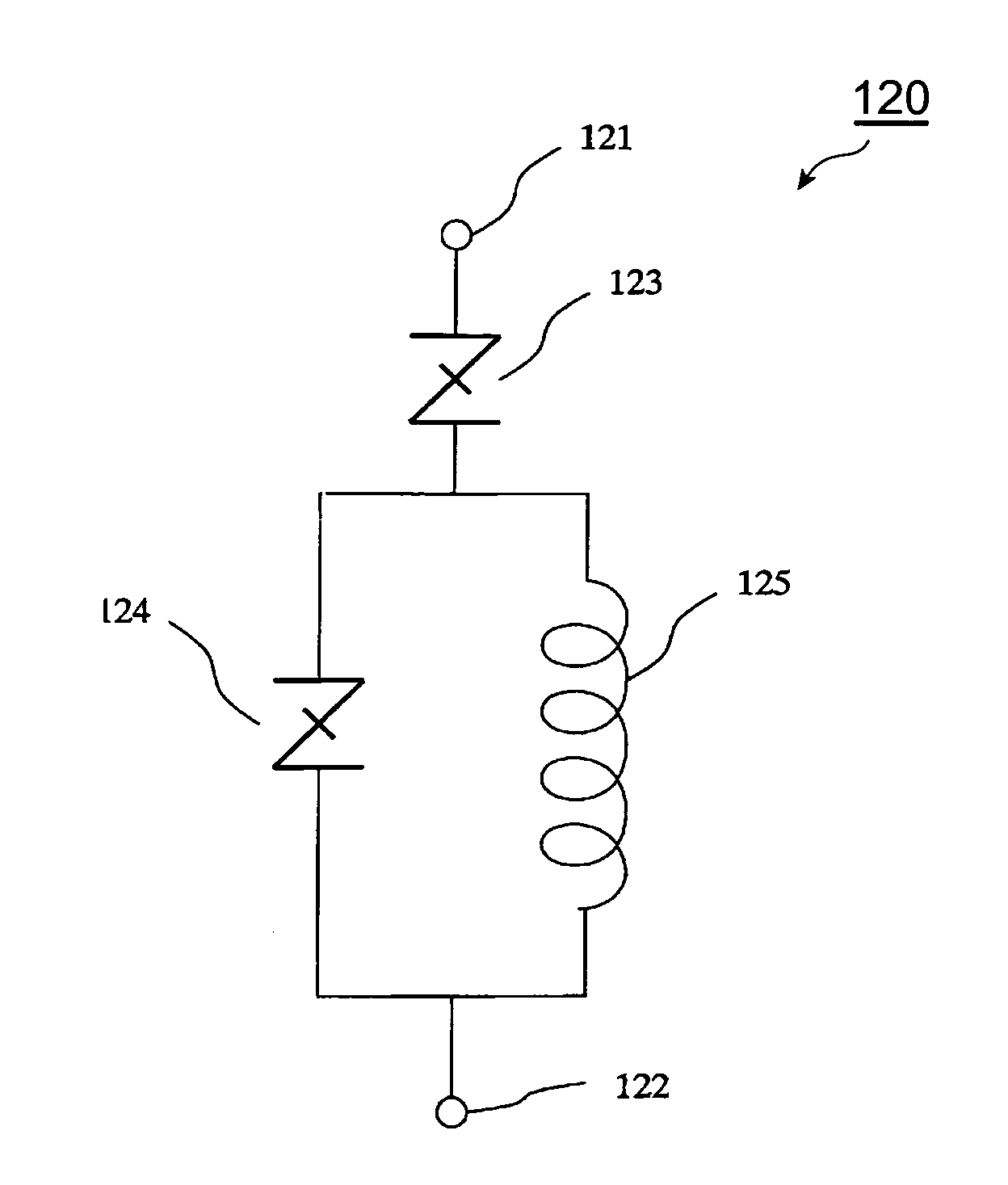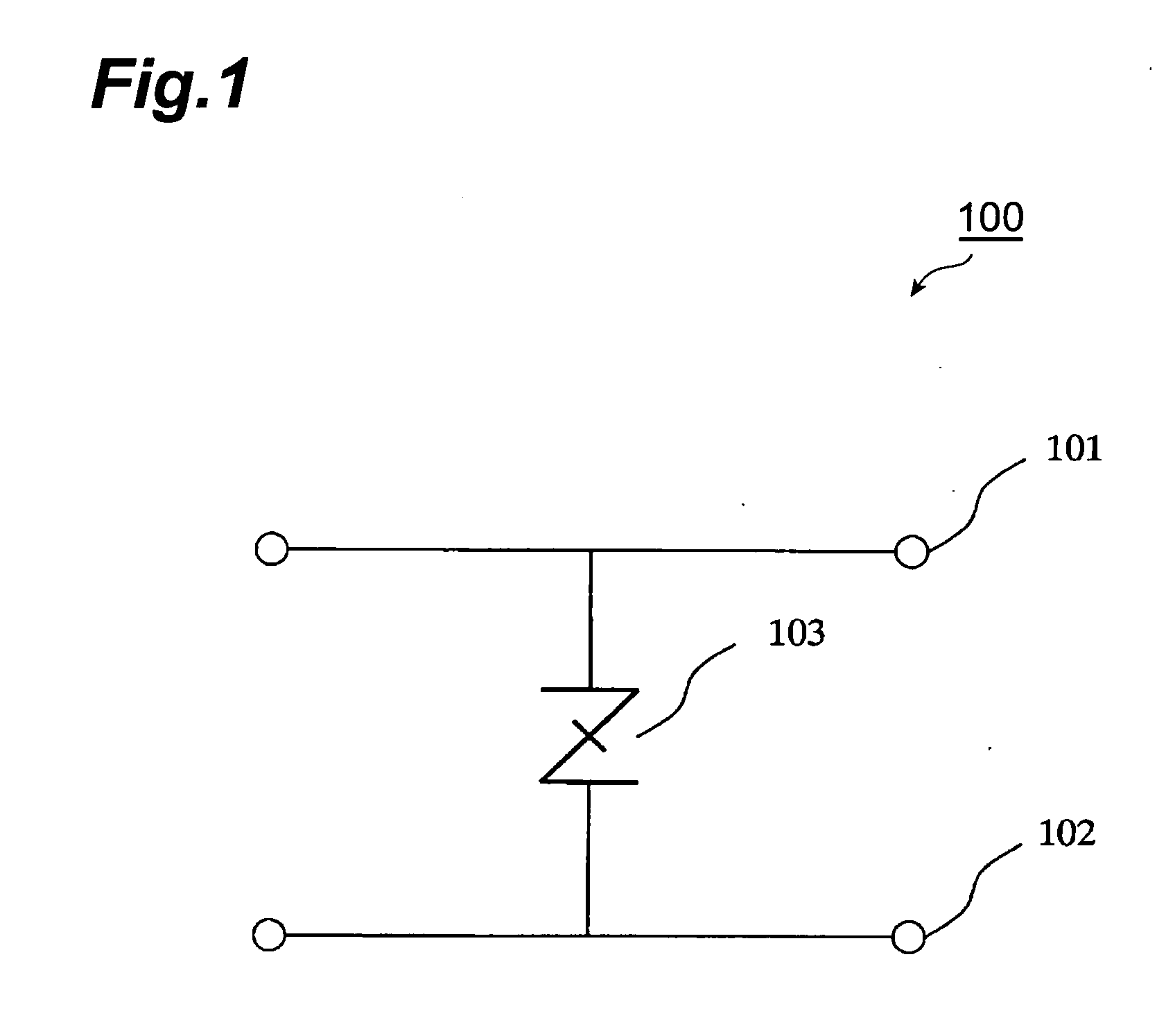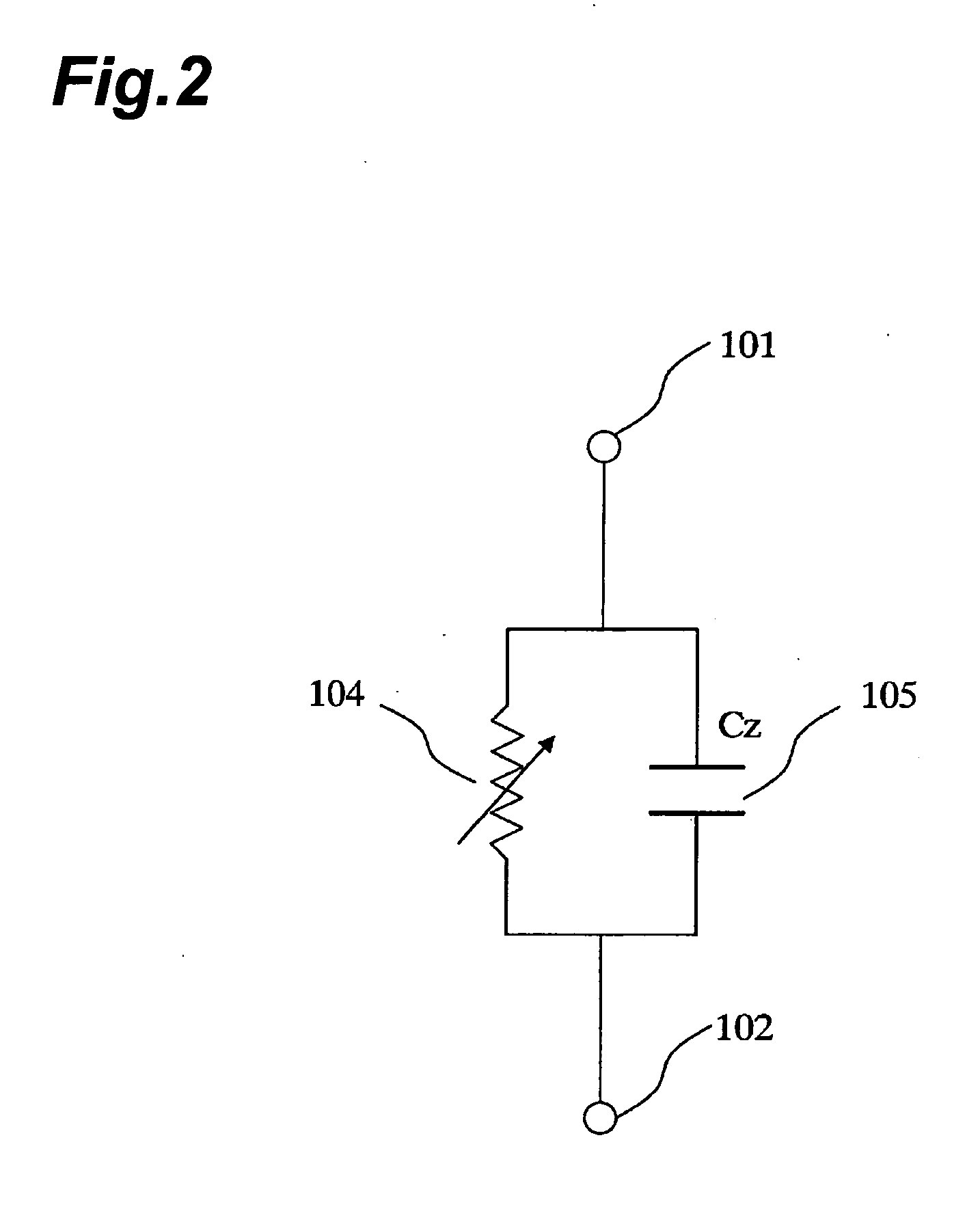Surge absorption circuit
- Summary
- Abstract
- Description
- Claims
- Application Information
AI Technical Summary
Benefits of technology
Problems solved by technology
Method used
Image
Examples
first embodiment
[0061] First Embodiment
[0062]FIG. 7 shows the circuit structure of the surge absorption circuit in accordance with an embodiment of the present invention. A surge absorption circuit 10 shown in FIG. 7 comprises one input terminal 11 of differential input terminals, the other input terminal 12 of the differential input terminals, one output terminal 13 of differential output terminals, the other output terminal 14 of the differential output terminals, a first surge absorbing device 21, a second surge absorbing device 22, a first inductor device 25, and a second inductor device 26.
[0063] As shown in FIG. 7, the surge absorption circuit 10 comprises a pair of input terminals 11 and 12 and a pair of output terminals 13 and 14 for connection to the outside. The first inductor device 25 is connected between the input terminal 11 and output terminal 13, whereas the second inductor device 26 is connected between the input terminal 12 and output terminal 14. The first surge absorbing device...
second embodiment
[0090] Second Embodiment
[0091]FIG. 16 shows the circuit structure of the surge absorption circuit in accordance with an embodiment of the present invention. A surge absorption circuit 20 shown in FIG. 16, one input terminal 11 of differential input terminals, the other input terminal 12 of the differential input terminals, one output terminal 13 of differential output terminals, the other output terminal 14 of the differential output terminals, a first surge absorbing device 21, a second surge absorbing device 22, a first inductor device 25, a second inductor device 26, a third resistor device 35, a fourth resistor device 36, a first capacitor device 37, and a second capacitor device 38.
[0092] The surge absorption circuit shown in FIG. 16 has such a structure that the third resistor device 35 and first capacitor device 37 connected in parallel between the input terminal 11 and output terminal 13 and the fourth resistor device 36 and second capacitor device 38 connected in parallel ...
third embodiment
[0106] Third Embodiment
[0107]FIG. 19 shows the circuit structure of the surge absorption circuit in accordance with an embodiment of the present invention. The surge absorption circuit 30 shown in FIG. 19 comprises: one input terminal 11 of differential input terminals; the other input terminal 12 of the differential input terminals; one output terminal 13 of differential output terminals; the other output terminal 14 of the differential output terminals; a first surge absorbing device 21; a second surge absorbing device 22; a first inductor device 25; a second inductor device 26; a first resistor device 31; a second resistor device 32; a third inductor device 33, and a fourth inductor device 34. In the surge absorption circuit 30, the first surge absorbing device 21, the first resistor device 31 and the third inductor device 33 are connected in series, thereby configuring the first surge absorbing portion. In addition, the second surge absorbing device 22, the second resistor devic...
PUM
 Login to View More
Login to View More Abstract
Description
Claims
Application Information
 Login to View More
Login to View More - R&D
- Intellectual Property
- Life Sciences
- Materials
- Tech Scout
- Unparalleled Data Quality
- Higher Quality Content
- 60% Fewer Hallucinations
Browse by: Latest US Patents, China's latest patents, Technical Efficacy Thesaurus, Application Domain, Technology Topic, Popular Technical Reports.
© 2025 PatSnap. All rights reserved.Legal|Privacy policy|Modern Slavery Act Transparency Statement|Sitemap|About US| Contact US: help@patsnap.com



